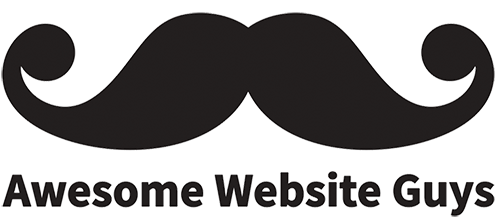In today’s competitive digital age, it is imperative to provide a seamless user-experience and fast site for your target audience. Optimizing your site is a necessary part to having a successful website. However, it can be overwhelming or time-consuming to regularly take the steps to fully optimize your site.
Before we dive into the top ways to optimize your WordPress site, it’s helpful to know what optimization is all about. Website optimization is the process of using different tools and strategies to improve your site’s performance, increase site traffic, conversions, and revenue. Indeed, there are significant benefits to optimizing your site on a platform hosting over 38% of websites globally.
Now that we’ve discussed what site optimization entails, let’s discuss the top 5 ways to optimize your site.
1. Upgrade Your Hosting Provider
While free or cheap hosting providers seem tempting for the cost savings, they are not the best options for truly optimizing your site. Oftentimes, these providers offer only shared hosting. This type of hosting is where sites share the same server space with other websites and have to compete for resources. This may be good for personal or small sites, but it’s not ideal for growing businesses that require more bandwidth, data, security protection, and faster loading speeds.
To fully optimize your business site, it’s recommend that you consider choosing a dedicated or cloud hosting provider. These providers are a more expensive investment, but the benefits outweigh the costs. For example, sites hosted on cloud servers enjoy faster site speeds, more data protection, bandwidth, and reliability to keep your site running 24/7.
Additionally, dedicated and cloud hosting providers don’t make you compete with other sites for server space or resources. Indeed, this is helpful when you are operating a business site that needs to provide lightning-fast site speeds for your target audience.
2. Use a Lightweight, Responsive WordPress Theme
With almost 9,000 WordPress themes, it can be daunting to find a theme that fits the bill. For most site owners, you want a theme that is beautiful, responsive, lightweight, and affordable. As you research the best theme for your site, keep in mind that not all themes are created equally and are fully optimized out of the box. A dynamic theme with pre-loaded applications and designs can be alluring, but isn’t necessarily the best option for site optimization.
It can be helpful to search for lightweight, fully optimized themes. These are usually built to be optimized and not weighed down by excessive applications and designs. Since every second counts when your potential customers visit your site, this is a worthy investment that will be beneficial to your business overtime.
3. Compress Your Images
While images play a role in enhancing your site content, they can also slow down a specific web page significantly. This is not ideal, especially when you only have a few seconds to capture users’ interest.
To increase your site’s speed, it is recommended that you optimize your images. This process involves compressing an image’s file size while maintaining the image’s quality as much as possible. TinyPNG is a fantastic, free tool that allows you to easily compress your site’s images. If you have a lot of images, there are free and paid WordPress plugins that optimize your images for you.
Once you compress your images, you can upload them to your WordPress site. This may seem like such a small step, but it pays off when you have numerous images on your site. By compressing all of your images, you will boost your site speeds.
4. Use a CDN
A Content Delivery Network (CDN) is an effective method to help optimize your site. A CDN is a network of servers that stores a copy of your site in different datacenters around the world. This helps provide faster loading speeds for all users as the CDN provides a site copy in the nearest location to your site visitors.
Some of the most popular CDN services include Cloudfare and StackPath (formerly called MaxCDN). If you need to provide a faster site experience for your users located around the globe, using a CDN makes a difference.
5. Cleanup Your WordPress Site
Overtime, the amount of plugins, widgets, spam blog comments, and old draft posts stored on your site add up. This not only eats up your site storage and database, it also slows down your WordPress site.
To reduce your site’s storage, you can clean up unwanted items from your site. This varies by what your site needs are. However, this may include unwanted plugins, widgets, media, and themes. You can simply deactivate these applications and even delete them if necessary. By decreasing the amount of web files stored on your site, your site will load faster without so much unnecessary resources to handle.
Test Your Site
Like anything you do, it’s nice to test to see if your optimization efforts worked. Luckily, there are online resources available to measure your site’s load speeds. It’s important to note that your site’s individual page speeds will vary based on their size, file requests, caching, and the type of content it has (static or dynamic).
Some popular testing resources include:
I hope you found this article helpful, and it inspires you to start or continue optimizing your WordPress site. It’s not always easy because it’s an ongoing process as technology is constantly evolving and improving. If you need a hands-off approach for website optimization, consider hiring a WordPress expert to take the reigns and ensure your site is fully optimized.
Valerie Hare
Valerie is a Content Strategist at Awesome Website Guys. She has a background in web development and writing. When not working, she enjoys going to the beach, walking her dog, and chilling with her family.

